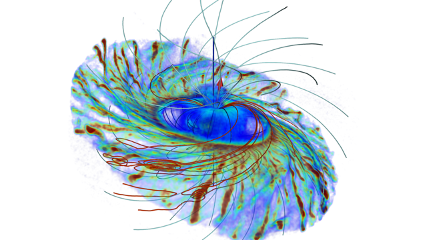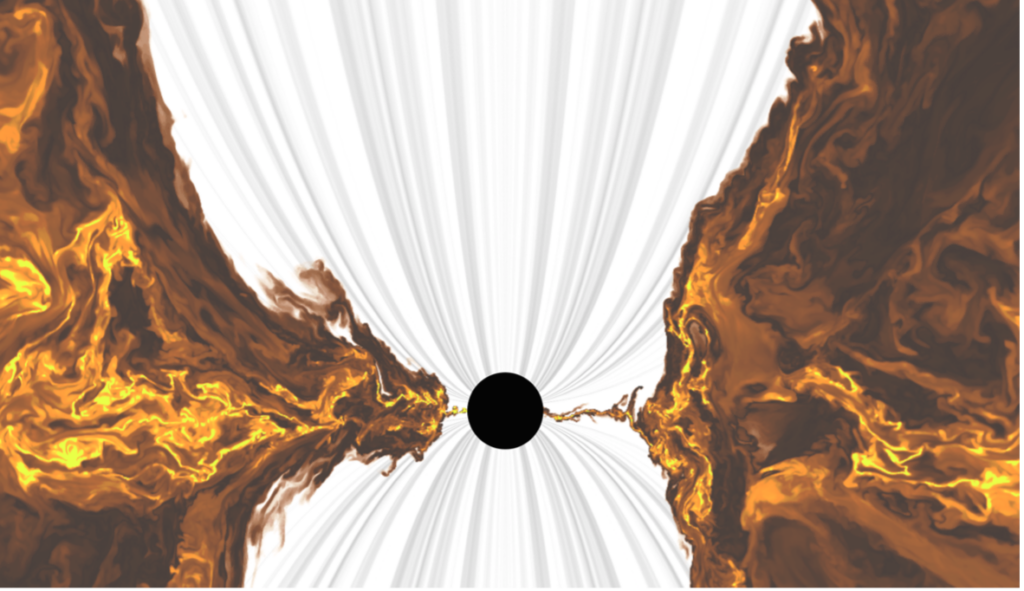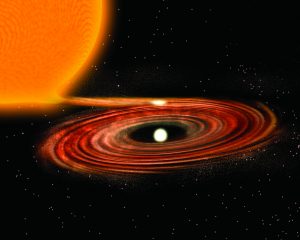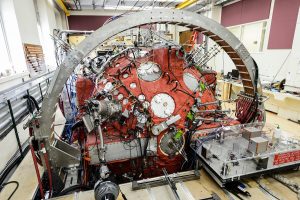Much of what we understand about fundamental physics is based on experiments done in the convenient “lab” of earth. But our planet is just one location, with its own relatively mild electromagnetic field. Do forces and energies work the same on earth as they do in all corners of the universe?


“It’s never guaranteed, as we see many theories break down at extreme environments,” says University of Wisconsin–Madison physics professor Ke Fang. “For example, a neutron star offers a magnetic field that is trillions of times stronger than on the Earth, and magnetars offer a field that is hundreds of trillions of time stronger. They are natural places to test many fundamental physics theories.”
Fang and UW–Madison astronomy and physics professor Ellen Zweibel are part of a new research collaboration announced August 21 by the Simons Foundation. The Simons Collaboration on Extreme Electrodynamics of Compact Sources (SCEECS) will study how electrodynamics — the interaction of electric currents and magnetic fields — behave in extreme environments in the distant universe using a combination of theory, simulation, and observation.
SCEECS has six main research questions, three centered on understanding electrodynamics in neutron stars and three centered in black holes. Each question pairs at least one senior-level investigator with an early-career co-investigator. Zweibel serves as the lead investigator on her black hole question, and she is paired with Richard Anantua at UT-San Antonio. Fang is co-investigator on a neutron star question, and she is paired with Anatoly Spitkovsky at Princeton.

The neutron star “labs” that Fang is using are amongst the most dense stars in the universe — as small as 10 kilometers in diameter and with densities a million billion times that of water. High energy particles streaming from neutron stars are detectable on Earth, but they tend to be significantly altered by the time they make it here.
“How do those particles survive, in the sense that these extreme energy particles would interact with the surrounding media and produce secondary particles, and how do these interactions play a role in converting what you see on Earth?” Fang’s research asks. “There are also several major questions revealed by recent observations, such as extended TeV gamma-ray halos around neutron stars that are completely new phenomena. We would like to go from first principle physics to understand these phenomena.”
Zweibel’s research will use the extreme environment of spinning black holes, where the electromagnetic field has recently been identified as a major factor in accretion flows, or the movement of gases into the dense center. Her question asks how these accretion flows contribute to magnetizing black holes to form relativistic jets, or powerful emissions of radiation and high-energy particles.

“Accretion disks, their magnetic fields, and their magnetized jets are found throughout the Universe. They play essential roles in star formation, in the evolution of double, or binary stars, and in many other astrophysical settings,” Zweibel says. “The magnetized accretion disks surrounding black holes are by far the most extreme, and test our theories to the limits. Remarkably, we can circle back to laboratory plasma experiments, including some right here at UW, to study magnetized disks and jets as well.”
SCEECS is housed at Stanford University and includes researchers from 14 other US and international universities. UW–Madison and Columbia University are the only universities that have more than one investigator in the collaboration. Most of the funding will be used to support investigators, postdoctoral fellows, and graduate students.
The collaboration plans to host an in-person kick-off in October at Stanford with regular virtual meetings throughout the year. Those meetings will be a place where everyone involved in the research, including students, postdocs, and faculty, can provide updates and seek feedback. Larger-scale collaborations such as this one are nothing new to physicists, but those groups are almost always made up of experimental physicists.
“It’s rare for theorists to be in a larger collaboration because we’re usually working alone or in a small group,” Fang says. “This program is exciting because it collects leading theorists in the field from many different institutions and provides a network for us to collaborate with each other.”
The Simons Foundation’s mission is to advance the frontiers of research in mathematics and the basic sciences. The Foundation makes grants in four areas, including Mathematics and Physical Sciences, through which this collaboration is supported.

